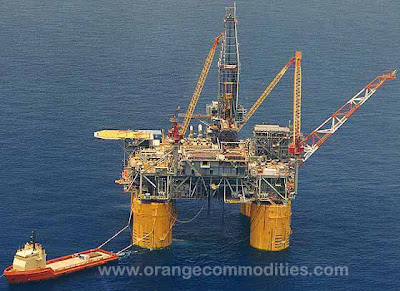Copper futures edged higher to hit a two-day high on Tuesday, as
mounting optimism over the health of the global economy continued to
support appetite for growth-linked assets.
Copper is sensitive to the economic outlook because of its widespread uses in construction and manufacturing.
On the Comex division of the New York Mercantile Exchange, copper futures for March delivery traded at USD3.673 a pound during European morning trade, up 0.3% on the day.
New York-traded copper prices rose by as much as 0.75% earlier in the day to hit a session high of USD3.691 a pound.
Copper prices rose Monday after data showed that U.S. durable goods orders rose more-than-expected in December, jumping 4.6% compared to expectations for a 1.8% rise.
Market participants now looked ahead to Wednesday’s preliminary data on U.S. fourth quarter economic growth, as well as Friday’s U.S. nonfarm payrolls report, as markets attempt to gauge the strength of the U.S. economic recovery.
The Federal Reserve’s policy-setting meeting on Wednesday will also be in focus, as markets search for clues over the future of the central bank’s ultra-loose monetary policy.
Also, China will release its official manufacturing data for January at the end of the week, providing investors with another chance to see whether the recovery in the world’s second largest economy remains on track.
China is the world’s largest copper consumer, accounting for almost 40% of world consumption last year.
Elsewhere on the Comex, gold for April delivery rose 0.5% to trade at USD1,662.85 a troy ounce, while silver for March delivery climbed 0.95% to trade at USD31.07 a troy ounce.
Source : INVESTING.COM
Copper is sensitive to the economic outlook because of its widespread uses in construction and manufacturing.
On the Comex division of the New York Mercantile Exchange, copper futures for March delivery traded at USD3.673 a pound during European morning trade, up 0.3% on the day.
New York-traded copper prices rose by as much as 0.75% earlier in the day to hit a session high of USD3.691 a pound.
Copper prices rose Monday after data showed that U.S. durable goods orders rose more-than-expected in December, jumping 4.6% compared to expectations for a 1.8% rise.
Market participants now looked ahead to Wednesday’s preliminary data on U.S. fourth quarter economic growth, as well as Friday’s U.S. nonfarm payrolls report, as markets attempt to gauge the strength of the U.S. economic recovery.
The Federal Reserve’s policy-setting meeting on Wednesday will also be in focus, as markets search for clues over the future of the central bank’s ultra-loose monetary policy.
Also, China will release its official manufacturing data for January at the end of the week, providing investors with another chance to see whether the recovery in the world’s second largest economy remains on track.
China is the world’s largest copper consumer, accounting for almost 40% of world consumption last year.
Elsewhere on the Comex, gold for April delivery rose 0.5% to trade at USD1,662.85 a troy ounce, while silver for March delivery climbed 0.95% to trade at USD31.07 a troy ounce.
Source : INVESTING.COM

















